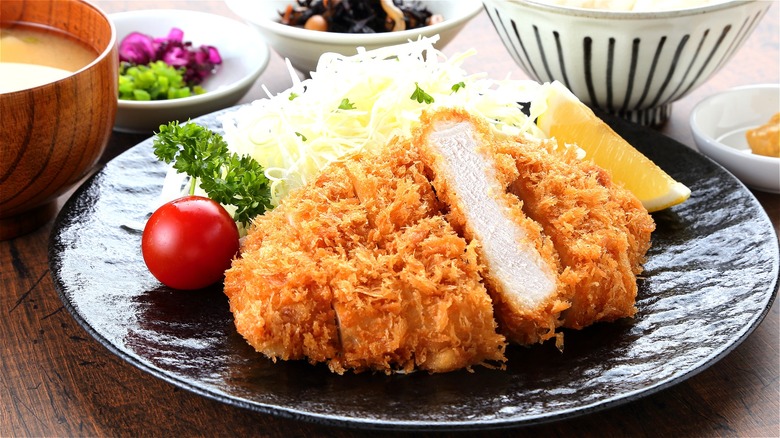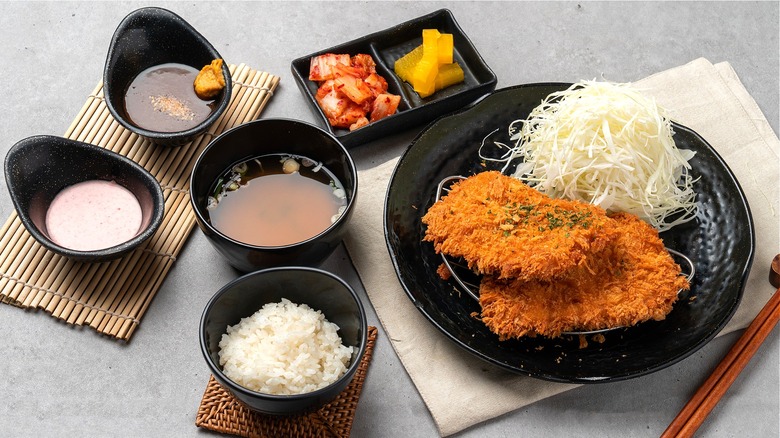A Chef Explains The Essential Sides To Serve With Katsu
Do you enjoy traditional Japanese cuisine? Outside of sitting down to another bowl of grilled chicken ramen or platter of nigiri sushi, you may have developed a taste for simple comfort dishes like katsu. Whether this breaded delight is a longtime favorite or a new food you'd like to try making at home, renowned chef Makoto Okuwa of Makoto Vail in Colorado shares the best sides to serve with this classic Japanese cuisine.
In the most basic sense, katsu is meat cutlets covered in panko breadcrumbs and fried. First and foremost, Okuwa recommends "cabbage salad to clean your palate." This bright and crunchy vegetable resets your mouth, and cabbage is a nice side to balance the extra grease in traditional katsu. Some foodies in Japan also believe serving cabbage salad with fried foods promotes digestion. While a simple lemon wedge makes this classic side refreshing, Okuwa recommends tonkatsu sauce.
This Japanese-style barbecue sauce comprises sugar and tomato, Worcestershire, and soy sauces. The sweet and salty flavors of tonkatsu sauce add a delicious taste to both cabbage salad and pork or chicken katsu. Next to serving your fried cutlets with cabbage salad and a steaming mound of rice, Chef Okuwa believes adding specialized condiments or homemade toppings can elevate homemade katsu even further.
How to upgrade katsu with a variety of ingredients
Luckily, when you need inspiration for your next Japanese-style meal, Makoto Okuwa is a chef who knows how to upgrade traditional Japanese cuisine. Okuwa has been cooking Japanese food professionally for over 25 years and owns multiple high-profile restaurants in cities like Miami, Washington D.C., and Mexico City. In addition to adding tonkatsu sauce to your platter of fried cutlets, Okuwa recommends adding a bit of karashi mustard and grated sesame seed for a more well-rounded flavor. Unlike American mustard, karashi mustard is more concentrated and has a robust and spicy taste. This ingredient helps balance the sweeter undertones of tonkatsu sauce.
Okuwa gives traditional katsu a signature twist at his restaurant. He told Daily Meal, "At Makoto Vail, we serve our pork tonkatsu with red miso and ginger chili sauce."
If you're not quite ready to attempt this unique flavor upgrade but still want to change up your usual recipe, consider swapping out tonkatsu sauce with a lighter alternative. Make country-style ponzu sauce or a more traditional variety containing soy sauce, mirin, dashi, and vinegar. Once you've decided on your sauce of choice and any extra condiments, serve your freshly prepared katsu with finely shredded cabbage and rice. The next time this traditional dish is on the menu, go one step further and include hot bowls of miso soup on the side.

